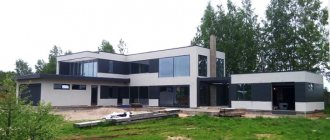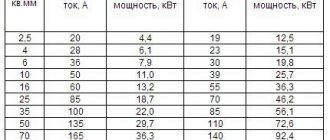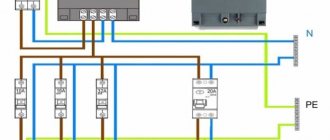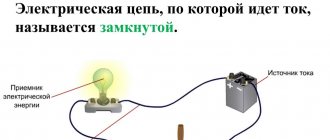Power supply network concept
Power supply networks are special engineering systems that include a set of various equipment designed to transmit electricity to consumers.
The most important elements of any power supply system are considered to be power lines, as well as a set of switchgears and electrical substations belonging to the operating company. In certain situations, both sources of electrical supply and consumers of electrical energy are considered elements of electrical supply networks. Typically, the network is divided into certain sections, which are characterized by different voltage ratings.
General information about electrical networks
An electrical network is a set of electrical installations for the transmission and distribution of electricity, including substations, distribution points, overhead (OHL) and cable power lines (CL), and conductors.
Based on their functional purpose, networks are divided into system-forming, supply and distribution networks.
Backbone networks are those designed to combine power plants and power systems for parallel operation (networks of 330 kV and above).
Supply networks are networks in which electricity is transmitted from substations of the backbone network or from 110...220 kV buses of large power plants to power centers of distribution networks over long distances.
Distribution networks are called networks designed to distribute electricity between power receivers. These include urban and rural electrical networks, as well as networks of industrial enterprises. The power centers of such networks are usually located at a short distance from a large number of power receivers.
Types of electrical networks
All existing power supply networks can be divided into separate types according to areas of application, type of current and scale characteristics.
According to their purpose, electrical networks are divided into 4 main types:
- general purpose systems designed to provide electrical energy to residential buildings, as well as industrial, administrative and agricultural facilities;
- autonomous electrical systems, which are used to provide energy to autonomous and mobile objects, including: ships, aircraft, vehicles and autonomous stations;
- systems for technological structures necessary to supply electricity to special production plants and other engineering systems;
- contact networks, the main focus of which is the transmission of electrical energy to moving consumers, for example, trams and locomotives.
Based on their scale and size, electrical systems are divided into the following types:
- Trunk power lines are electrical systems that connect individual countries and regions, including their largest centers of consumption and sources of electricity. Such systems are characterized by ultra-high voltage levels and significant power flows.
- Regional electrical systems are systems on a regional or individual scale that are powered by main power grids and their own local sources. Regional networks are necessary to provide electricity to large consumers - districts, cities and largest industrial enterprises. Such systems are characterized by high and medium voltage levels and large powers, which can be expressed in gigawatts and hundreds of megawatts.
- Distribution and district systems receiving power from regional sources. In most cases, district networks do not have their own sources of electricity; they are designed to serve small and medium-sized consumers, for example, villages, enterprises, neighborhoods, etc. These networks are characterized by low and medium voltage levels.
- Internal electrical systems. Such networks are designed to distribute electrical energy over short distances, within one block or area. Indoor systems sometimes have their own supplies, but usually have no more than two power points.
- Lower level systems. These are electrical networks of individual buildings and even premises. Often considered in conjunction with internal electrical systems. Such networks include, for example, power supply projects for offices, private houses and apartments.
According to the type of current, electrical networks can be divided into networks with three-phase alternating current, single-phase alternating current and direct current.
The alternating three-phase type is typical for most of the existing main, regional and district systems. Single-phase wiring is typically used in end-user residential electrical systems. Constant juice is used only in contact systems, for example, in autonomous electrical supply systems.
Composition and features of the electrical system
Definition 1
An electrical system is a part of an energy system that consists of electrical installations and networks connected by a common mode of operation and the continuity of distribution and production of electricity.
Elements of the electrical system are electrical networks, generators, power receivers, distribution devices, workshops, manufacturing plants, laboratories, as well as lifting vehicles that are used for work related to the operation of system elements. The electrical system is a complex object. These difficulties are due to the following aspects:
- A significant amount of work related to repair and maintenance of a large amount of equipment.
- Dependence of the operating modes of the system and its components on random factors, which include the operating mode of the energy system, consumers and weather conditions.
- Significant distance of electrical system objects from each other.
- A wide variety of functional devices and systems that produce electrical energy; regulation, management and control, and, consequently, the need for their constant and clear interaction.
- Relatively fast occurrence of processes that are associated with the failure of various components of one technological chain.
- High degree of electrical hazard for employees and the environment.
- Constant coincidence in time of the processes of transmission, generation and consumption of electrical energy.
- Continuity of the process of generation, transmission of electricity consumption, and, consequently, the need for continuous monitoring of this process.
Finished works on a similar topic
- Course work Electrical systems and networks 470 rub.
- Abstract Electrical systems and networks 230 rub.
- Test work Electrical systems and networks 250 rub.
Receive completed work or specialist advice on your educational project Find out the cost
Operation of electrical networks
An electrical system is required to transmit, distribute and transform electrical energy in accordance with the needs of users and the capabilities of electrical installations. Only experienced professionals should install electrical networks.
Most large power sources in operation today are designed and built using high-power alternating current generators. Due to the fact that the amplitude current voltage can be measured at any time using current transformers, the voltage level in the network can decrease and increase within a fairly wide range. Almost all large consumers of electrical energy are also adapted for connection to alternating current sources.
Currently, the use of three-phase alternating current is considered the current global standard for the production, consumption and transmission of electrical energy. On the territory of the Russian Federation and in other European countries, the industrial frequency of the current is 50 hertz.
Below you can use the online calculator to calculate the cost of electrical installation work.
Electricity of the net
Electricity of the net.
Electric power system
called the electrical part of the power system and the electrical energy receivers powered from it, united by the common process of production, transmission, distribution and consumption of electrical energy.
Currently, 74 regional systems operate in parallel within 6 integrated energy systems.
An electric power network is a set of electrical installations for the transmission and distribution of electrical energy, consisting of substations, switchgears, conductors, overhead and cable power lines operating in a certain territory.
Substation
is an electrical installation used for the conversion and distribution of electricity and consisting of transformers or other energy converters, switchgear up to and above 1000 V, a battery of control devices and auxiliary structures.
Distribution device
is an electrical installation that serves to receive and distribute electricity and contains switching devices, busbars and connecting busbars, auxiliary devices (compressor, battery, etc.), as well as protection devices, automation and measuring instruments.
Power line
(Power transmission line) of any voltage (overhead or cable) is an electrical installation designed to transmit electrical energy at the same voltage without transformation.
Based on a number of characteristics, electrical networks are divided into a large number of varieties, for which different methods of calculation, installation and operation are used.
Electrical networks are divided:
1. By voltage:
a) up to 1 kV;
b) above 1 kV.
2. According to the rated voltage level:
a) low voltage networks (up to 1 kV);
b) medium voltage networks (above 1 kV and up to 35 kV inclusive);
c) high voltage networks (110 ... 220 kV);
d) ultra-high voltage networks (330 ... 750 kV);
e) ultra-high voltage networks (above 1000 kV)
3. By degree of mobility:
a) mobile (allow multiple changes in the route, collapsing and deployment) - networks up to 1 kV;
b) fixed networks (have an unchangeable route and design):
•temporary - for powering facilities operating for a short time (several years);
•permanent - most electrical networks operate for decades.
4. By purpose:
a) networks up to 1 kV: lighting; power; mixed; special (control and signaling networks).
b) networks above 1 kV: local, serving small areas, with a range of 15... 30 km, voltage up to 35 kV inclusive; regional, covering large areas and connecting power plants of the electrical system with each other and with load centers, voltage 110 kV and higher.
5. By type of current and number of wires:
a) DC lines: single-wire, two-wire, three-wire (+, -, 0);
b) alternating current lines: single-phase (one- and two-wire), three-phase (three- and four-wire), single-phase (two phases and zero).
6. According to the operating mode of the neutral: with an effectively grounded neutral (networks above 1 kV), with a solidly grounded neutral (networks up to and above 1 kV), with an isolated neutral (networks up to and above 1 kV).
7. According to the electrical connection diagram:
a) open (non-redundant);
b) closed.
8. By design:
a) electrical wiring (power and lighting);
b) conductors - for transmitting electricity in large quantities over short distances;
c) overhead lines - for transmitting electricity over long distances;
d) cable lines - for transmitting electricity over long distances in cases where the construction of overhead lines is impossible.
The following requirements are imposed on electrical networks: reliability, survivability and efficiency.
Reliability
- the main technical requirement, which is understood as the ability of the network to fulfill its purpose within a given time and operating conditions, providing electrical receivers with electricity in the required quantity and proper quality.
The required amount of electricity is determined by the power and operating mode of electrical receivers. The quality of electricity depends on the network parameters and is determined by GOST 13109-97, which shows the permissible voltage deviations at the terminals of electrical receivers: electric motors -5% ... +10%; work lighting lamps for industrial enterprises and public buildings, outdoor floodlights -2.5%...+5%; lamps for lighting residential buildings, emergency and outdoor lighting, other electrical receivers ±5%.
Reliability is ensured:
1. using a network diagram that takes into account the responsibility of electrical receivers;
2. selection of appropriate brands of wires and cables;
3. careful calculation of the cross-sections of wires and cables for heating, permissible voltage loss and mechanical strength and calculation of voltage regulation devices;
4. compliance with the technology of electrical installation work;
5. timely and high-quality implementation of technical operation rules.
Electrical network survivability
- this is the ability to fulfill its purpose under conditions of destructive influences, including in a combat situation under the influence of enemy weapons.
Vitality is achieved:
1. using structures that are least susceptible to destruction when exposed to damaging factors of enemy weapons;
2. special protection of the network from damaging factors;
3. clear organization of repair and restoration work. Survivability is a basic tactical requirement.
Economical
— this is the minimum cost of constructing and operating a network, subject to the requirements of reliability and survivability.
Cost-effectiveness is ensured by:
1. using typical commercially produced and standard designs;
2. unification of materials and equipment;
3. the use of non-scarce and inexpensive materials;
4. the possibility of further development, expansion and improvement during operation.
AC current
Most power plants are built using an alternating current generator. In addition, the amplitude voltage of alternating current is easily changed using transformers, so you can lower or increase the voltage level over a wide range. Most consumers of electrical energy are also focused on using alternating current. The use of three-phase alternating current is the world standard in the generation, transmission and conversion of electricity.
When consumers are combined by phase into groups from three-phase alternating current, single-phase alternating current is obtained, which is used by many household consumers. Each group of consumers is allocated one of three phases, while the second wire (“zero”), which is used when transmitting single-phase current, is common to all groups and is grounded at its starting point.









